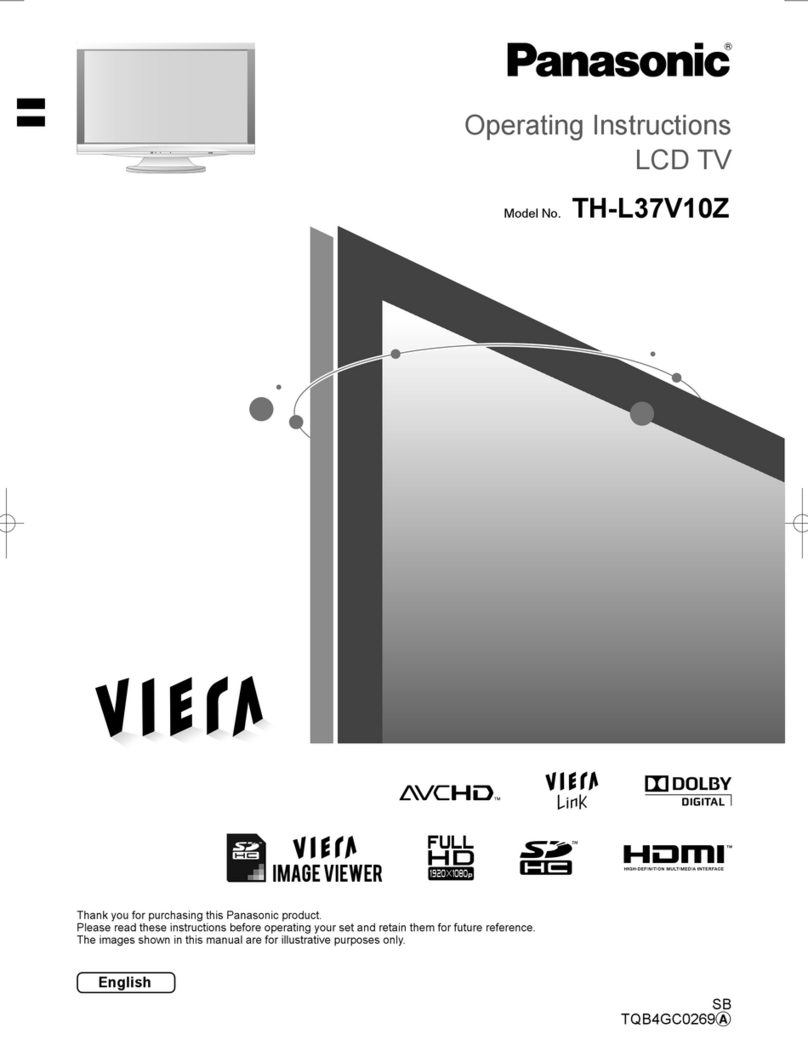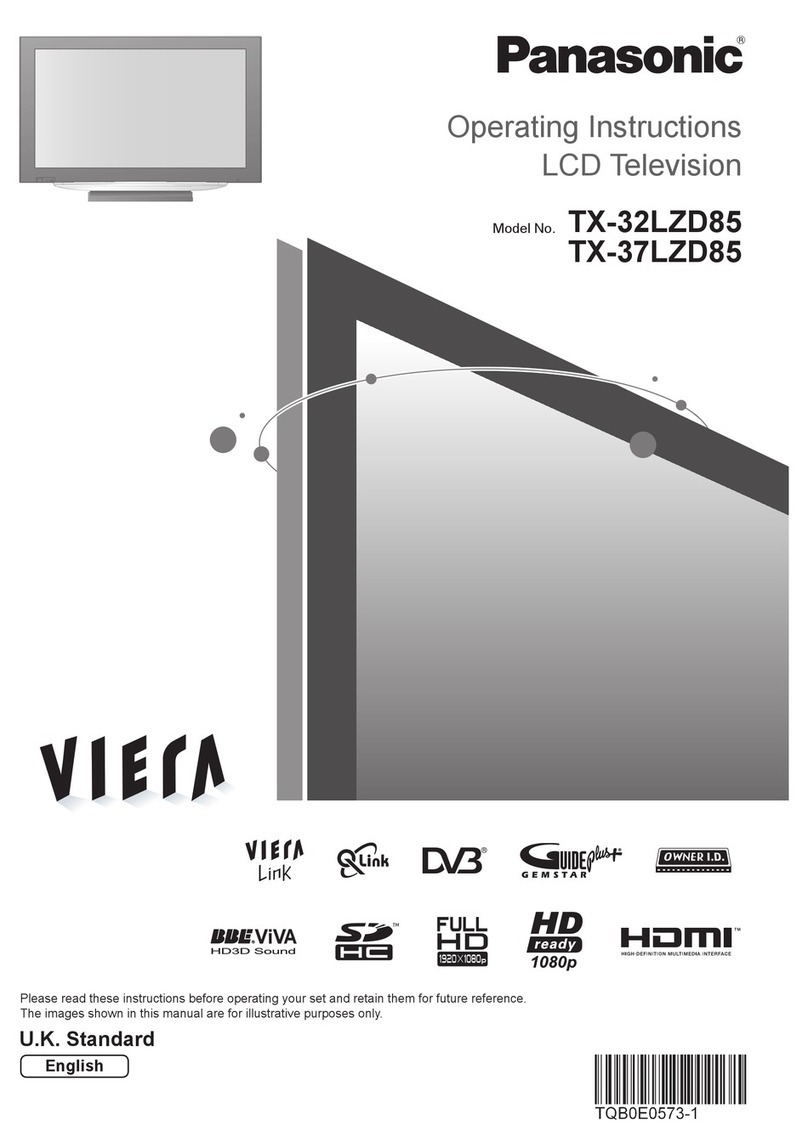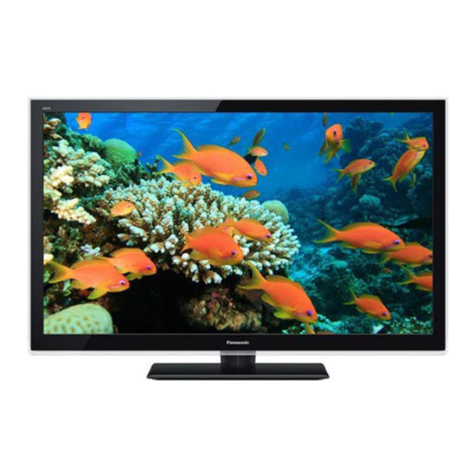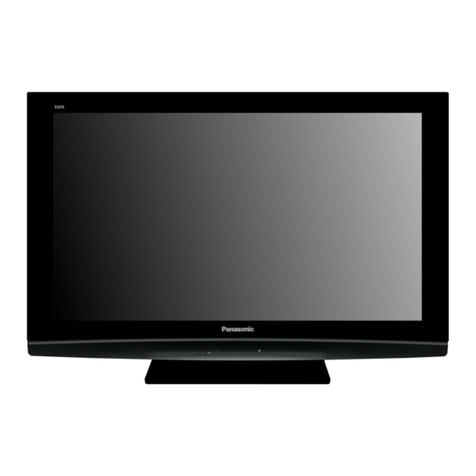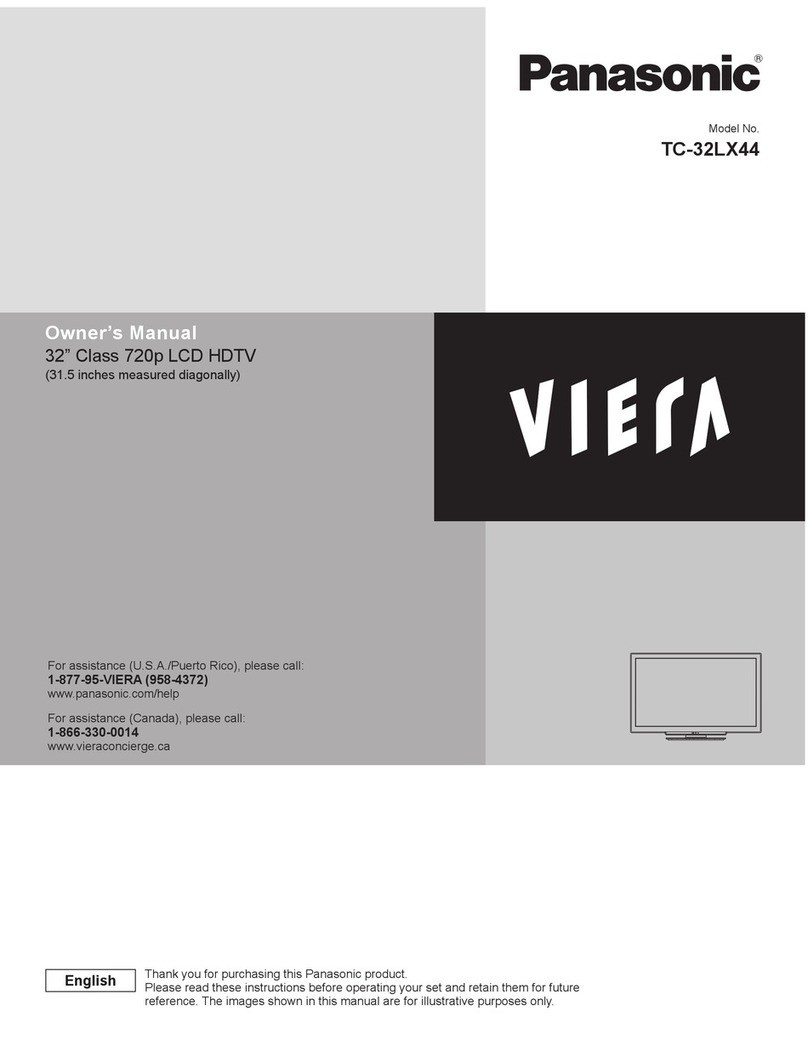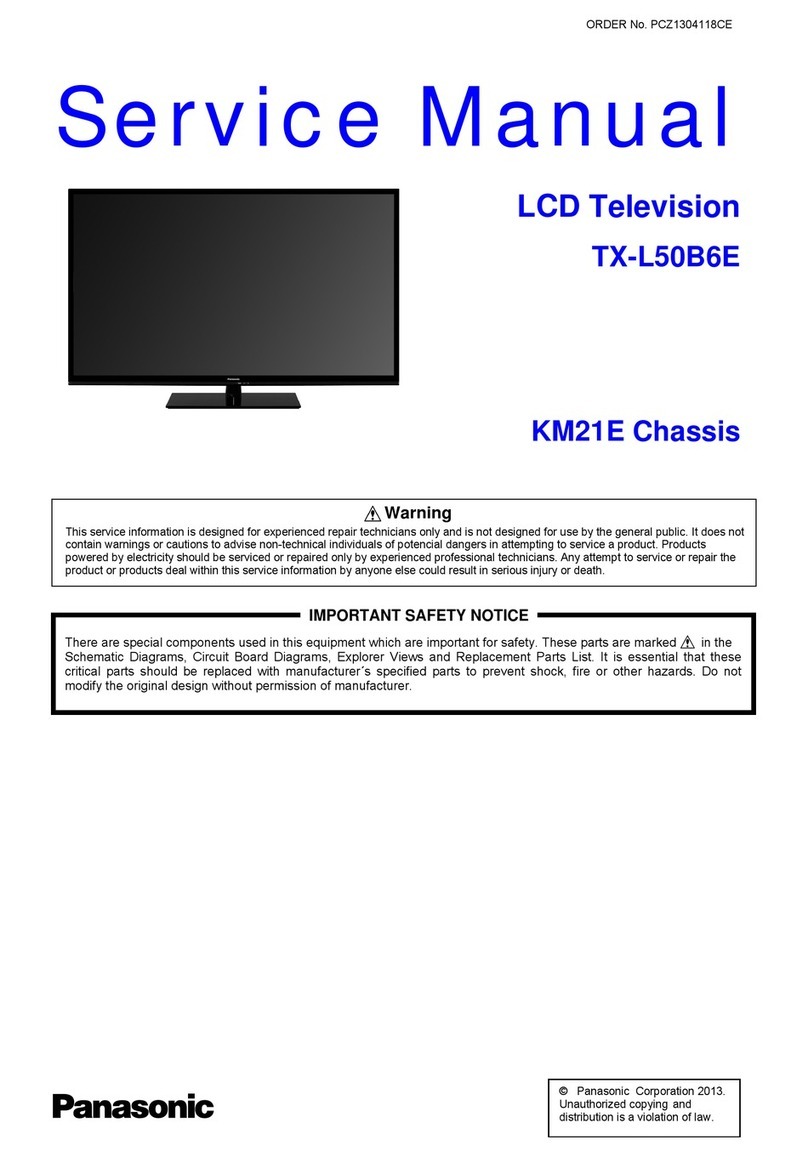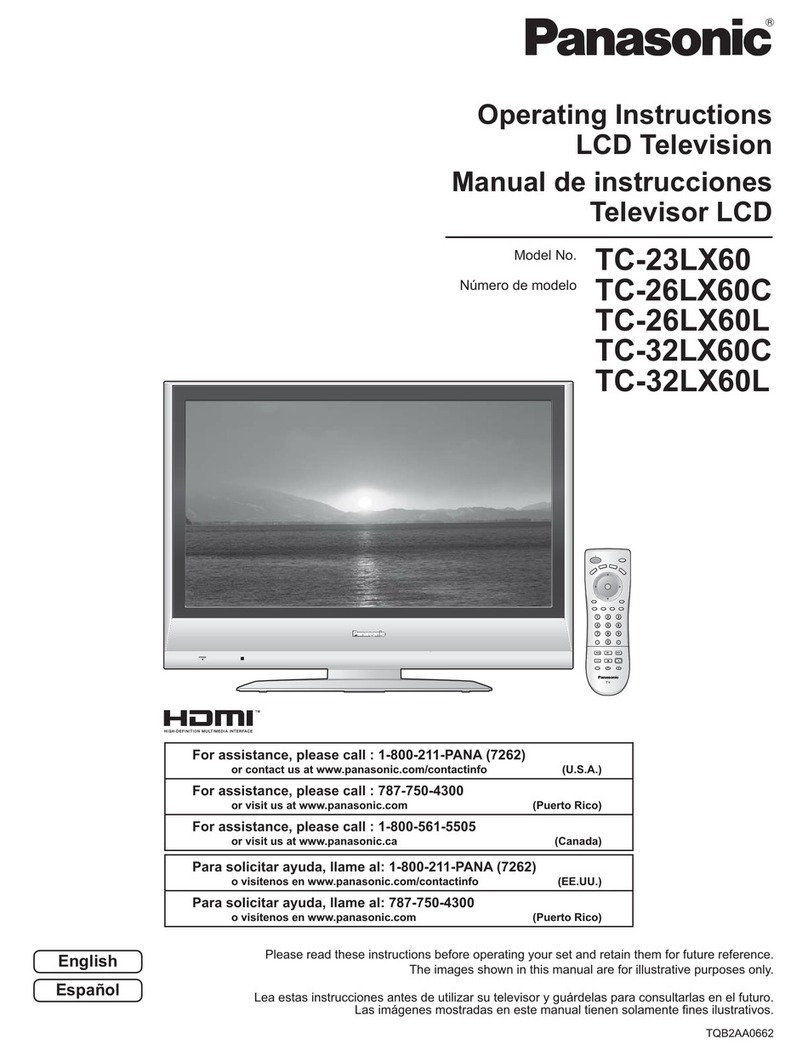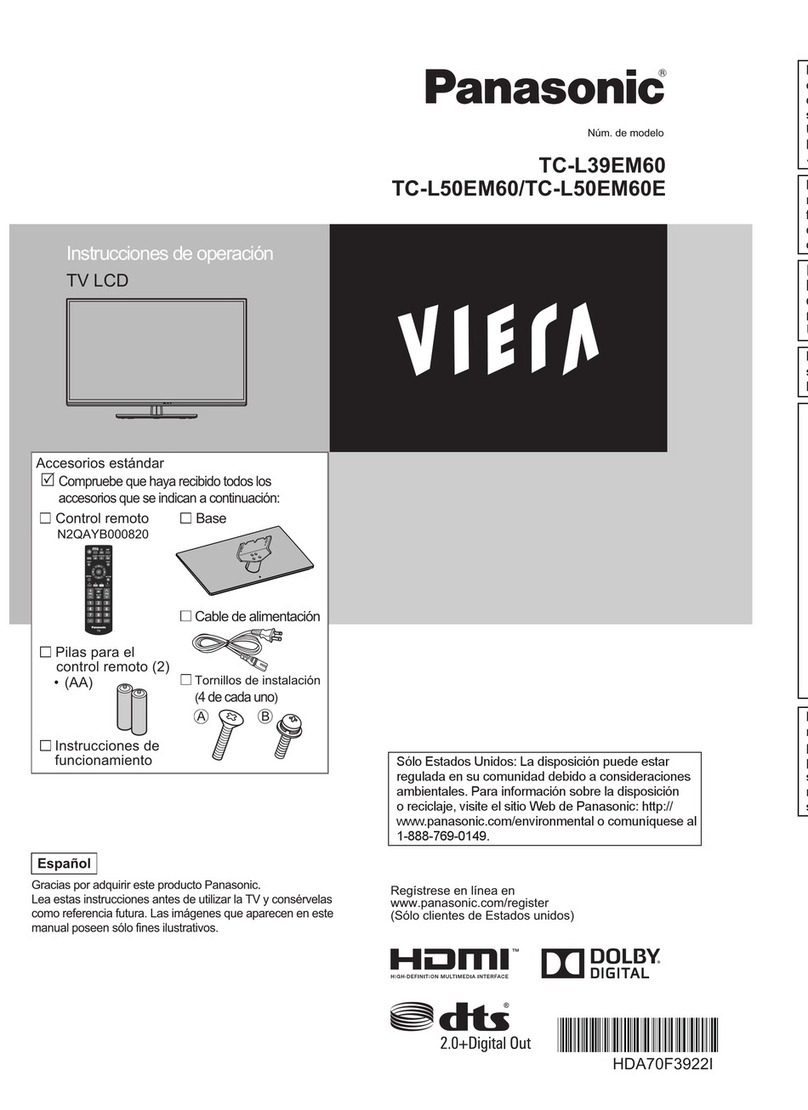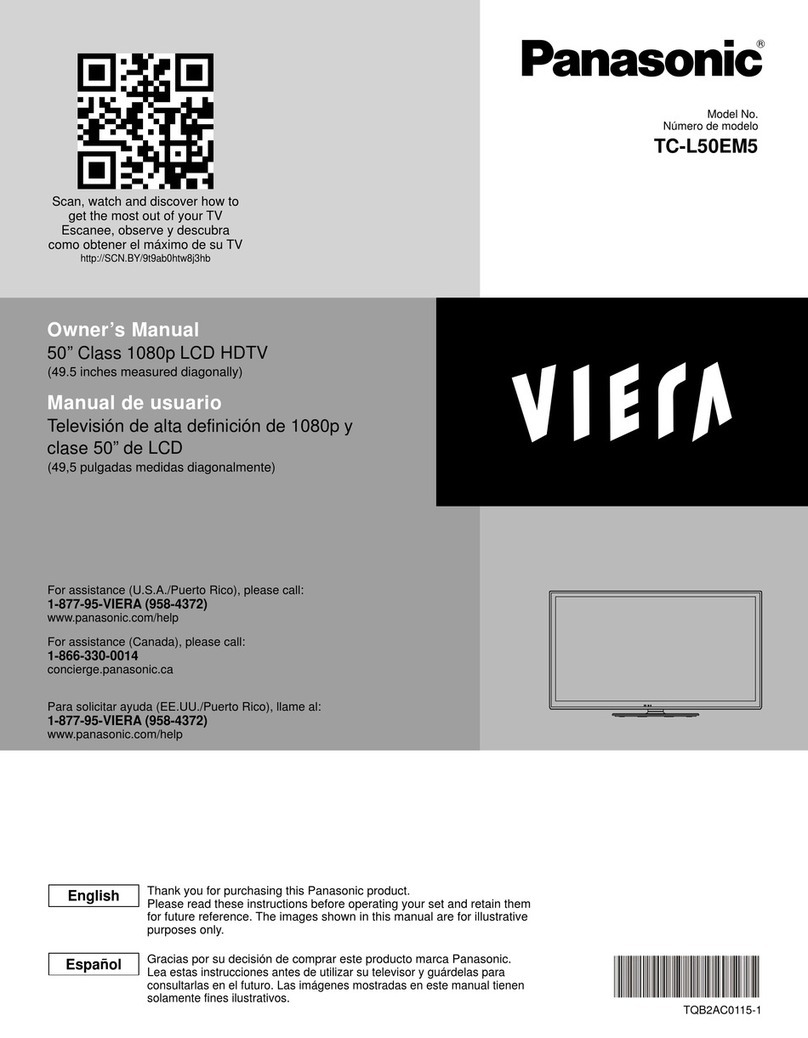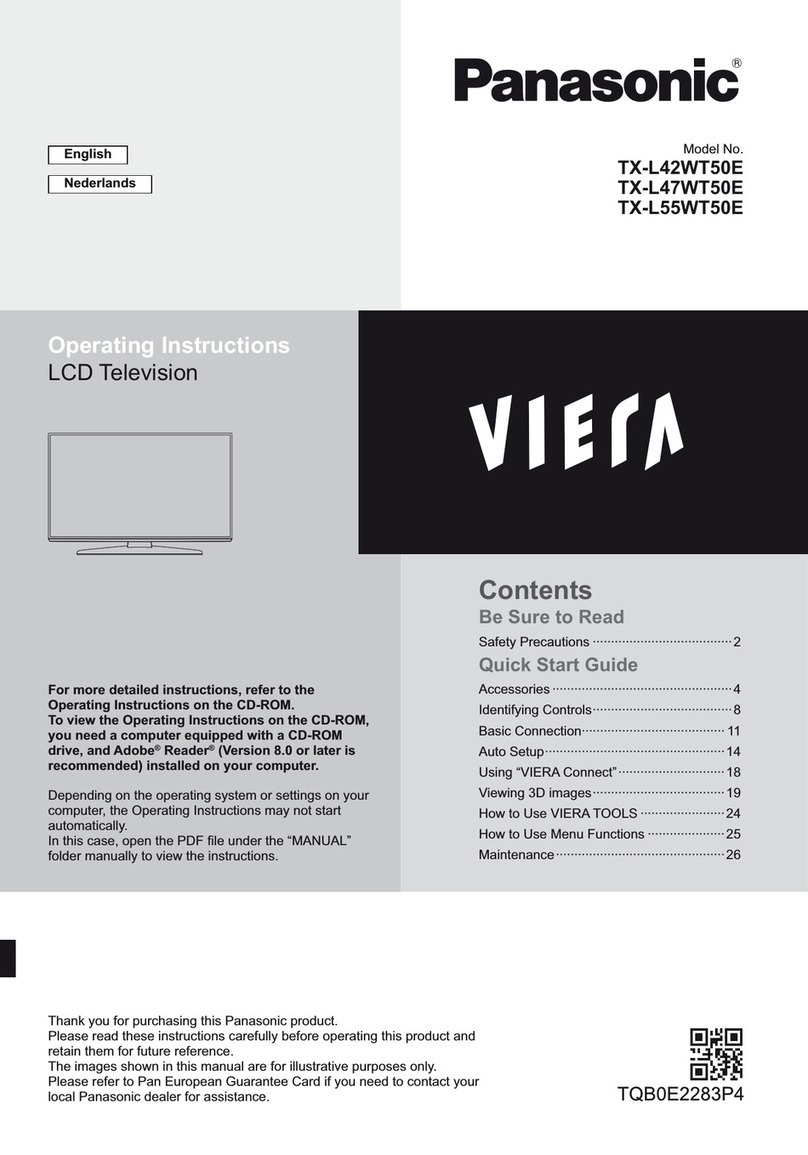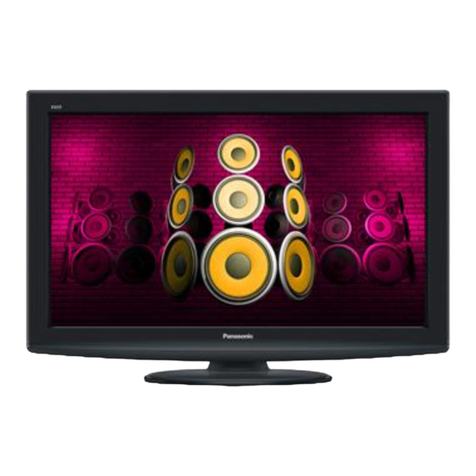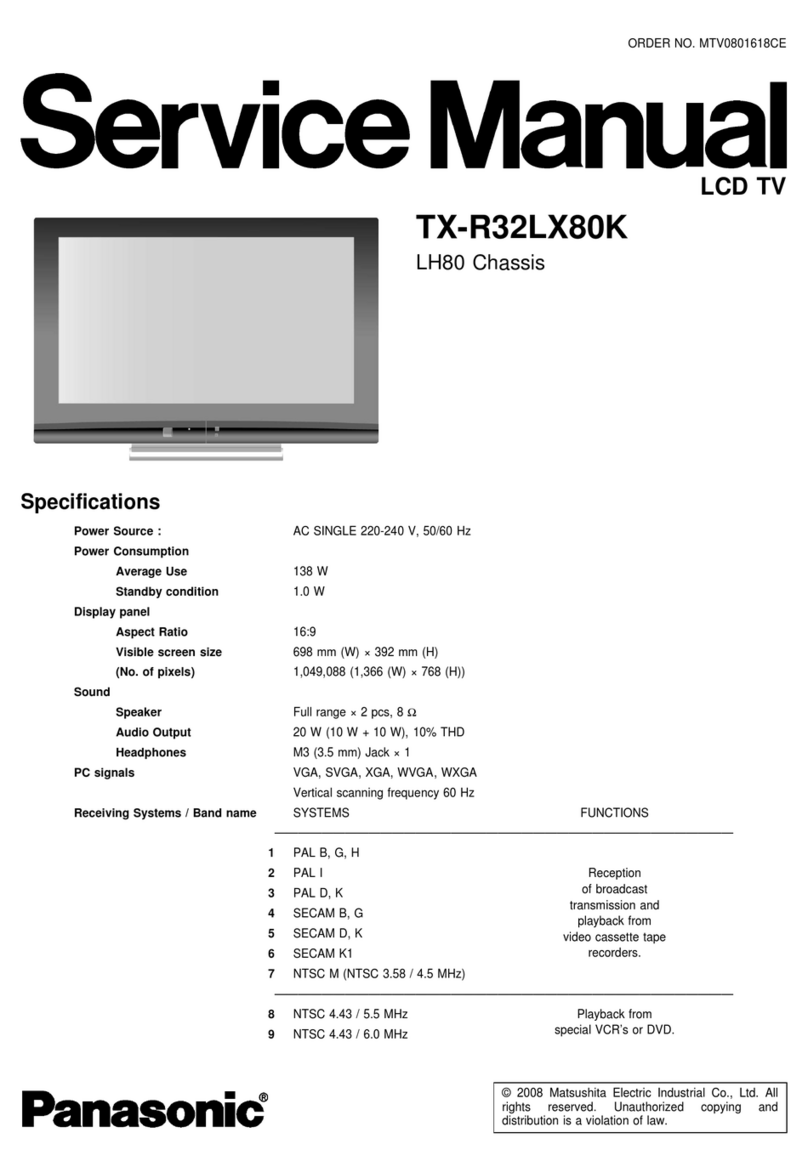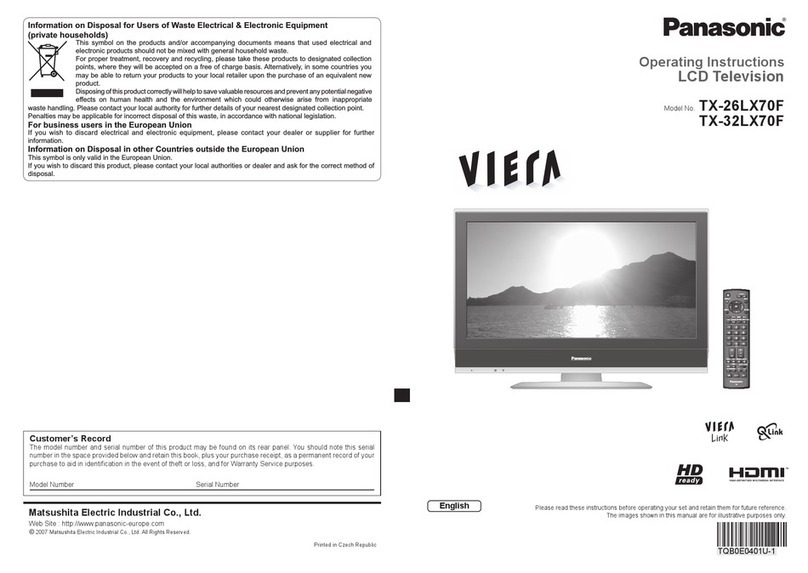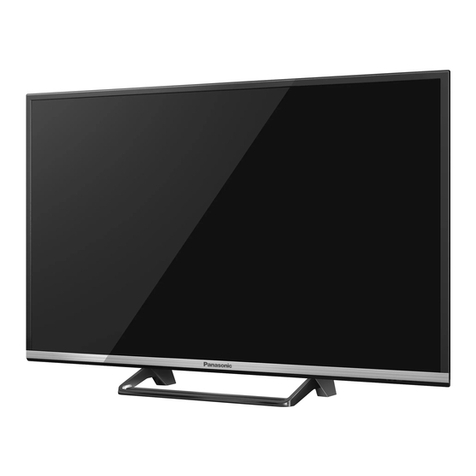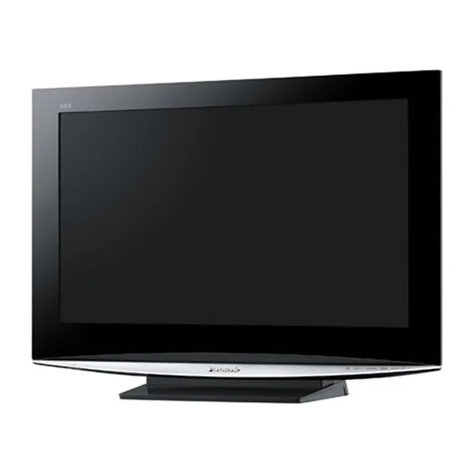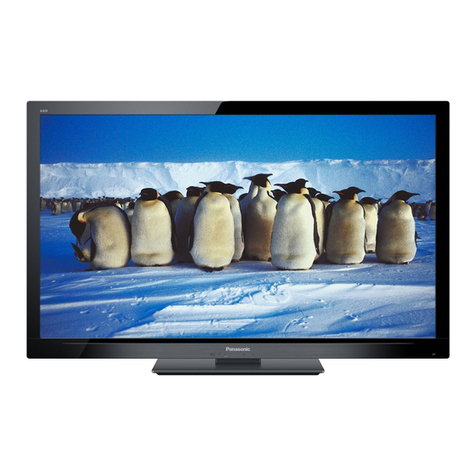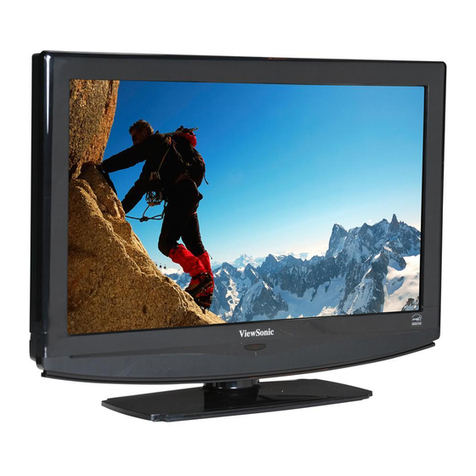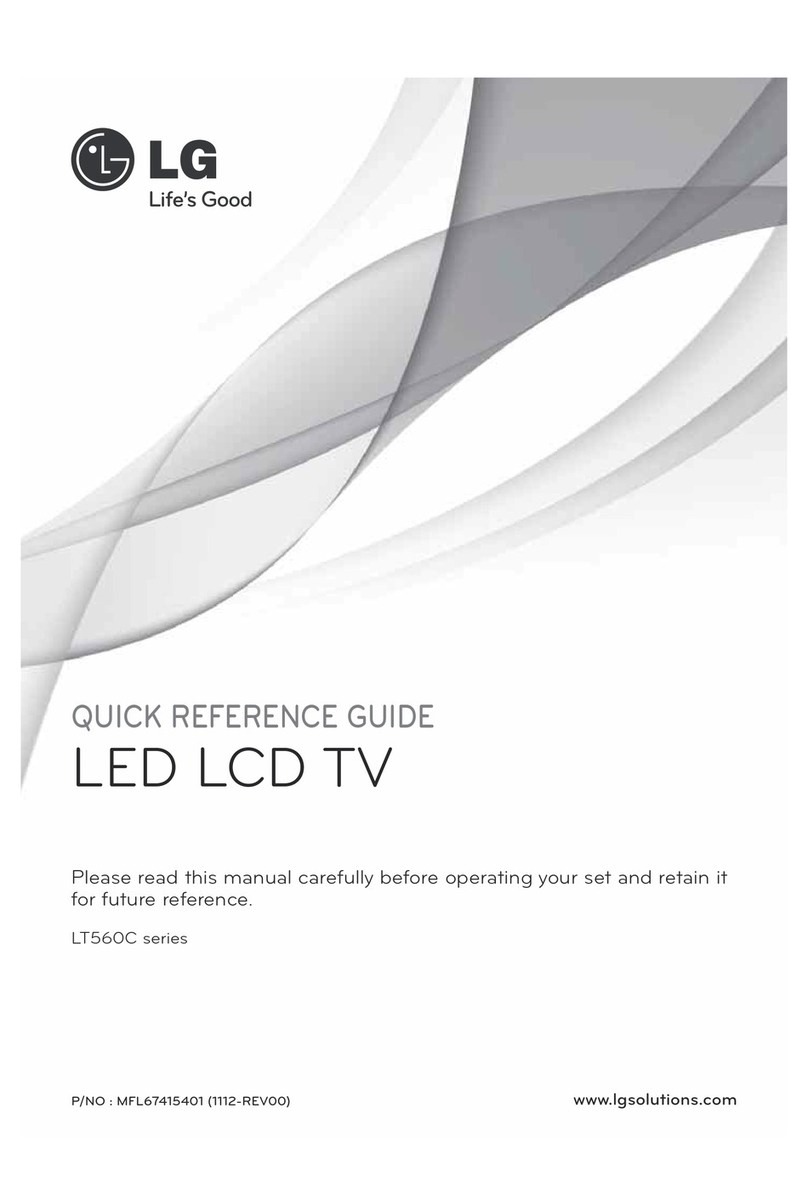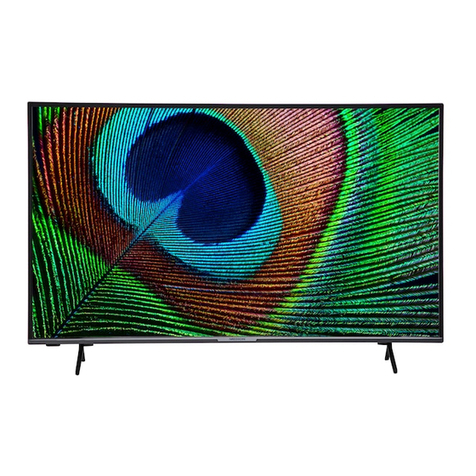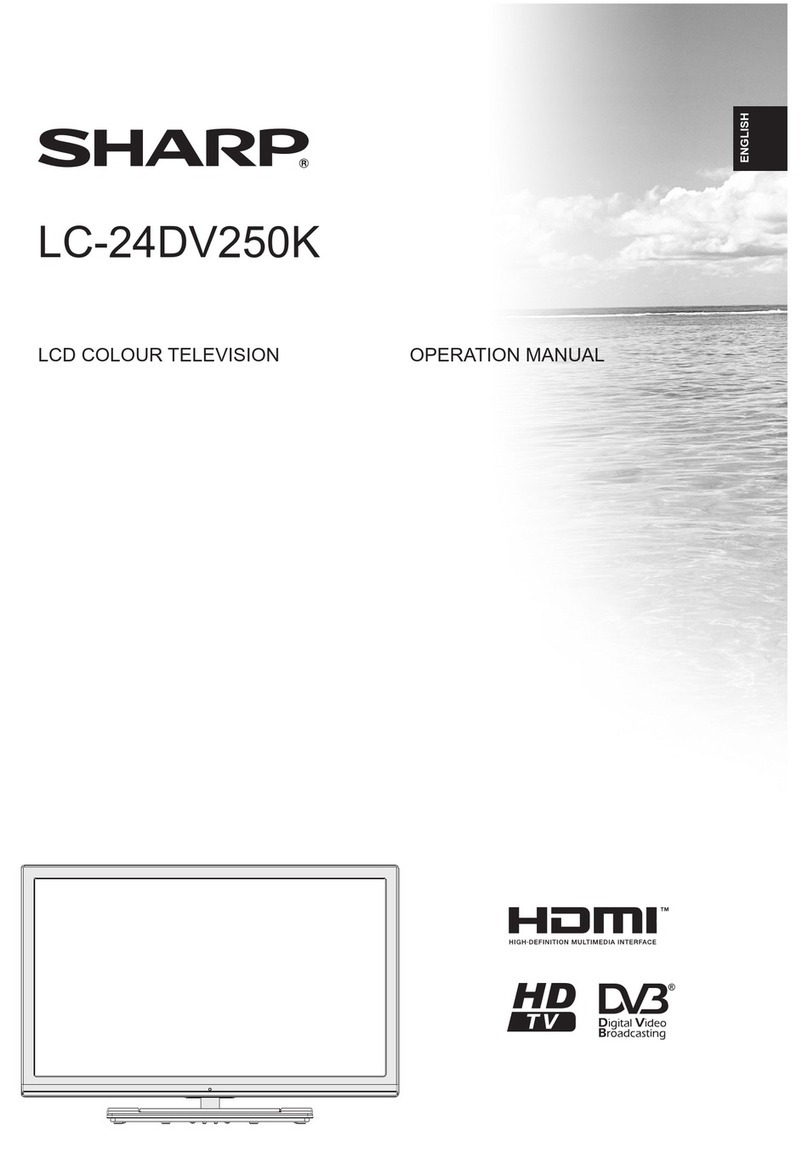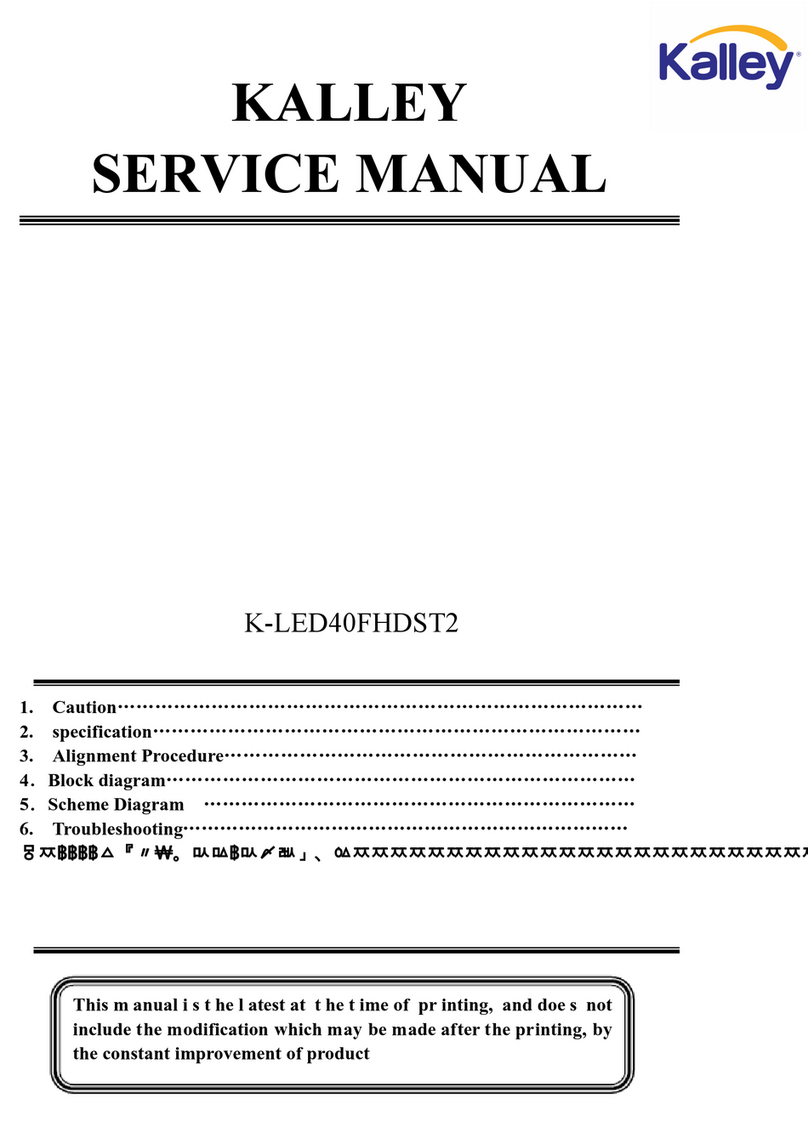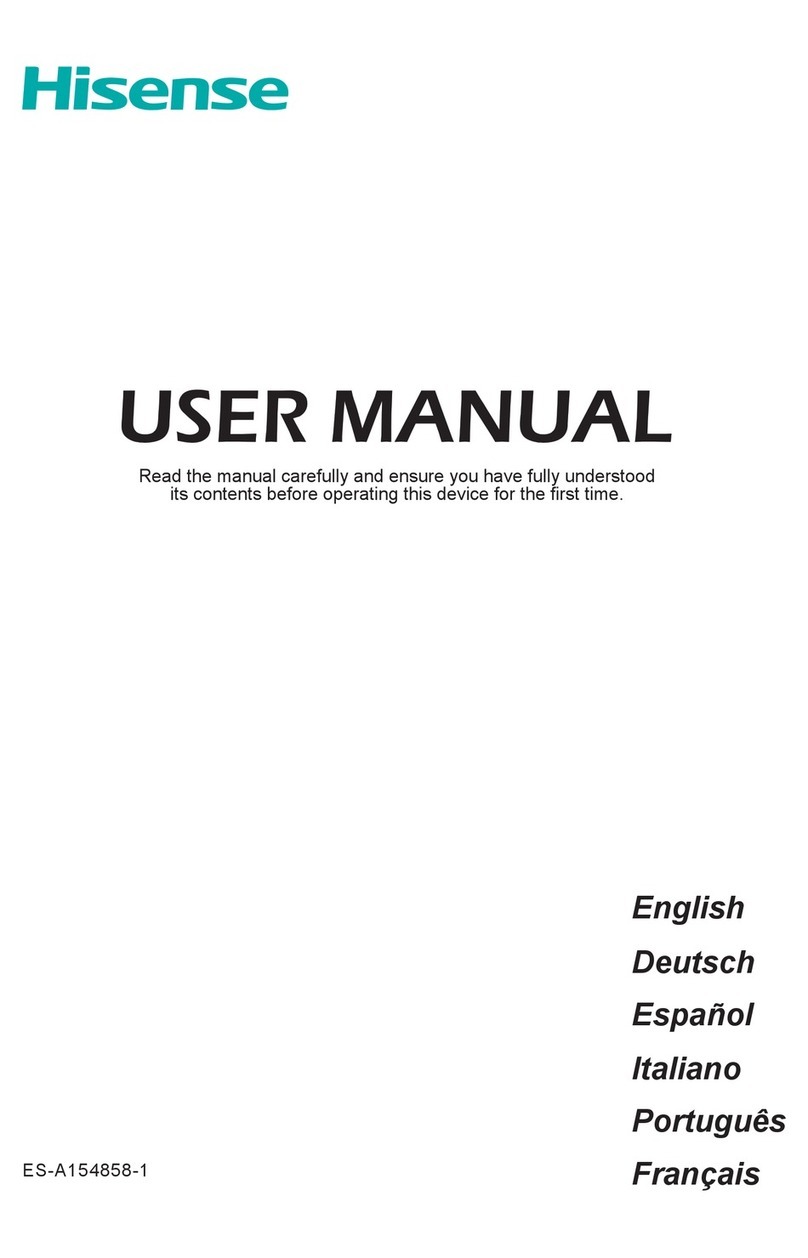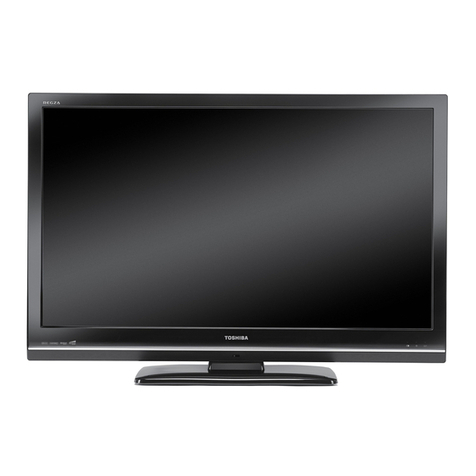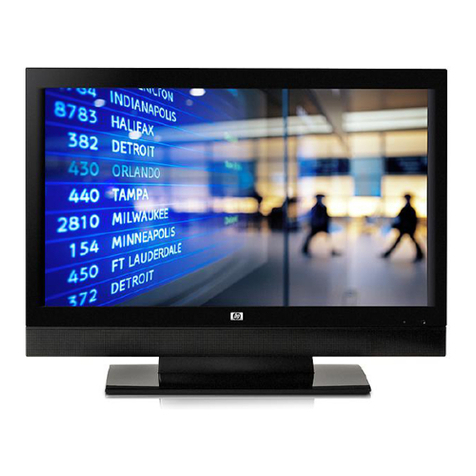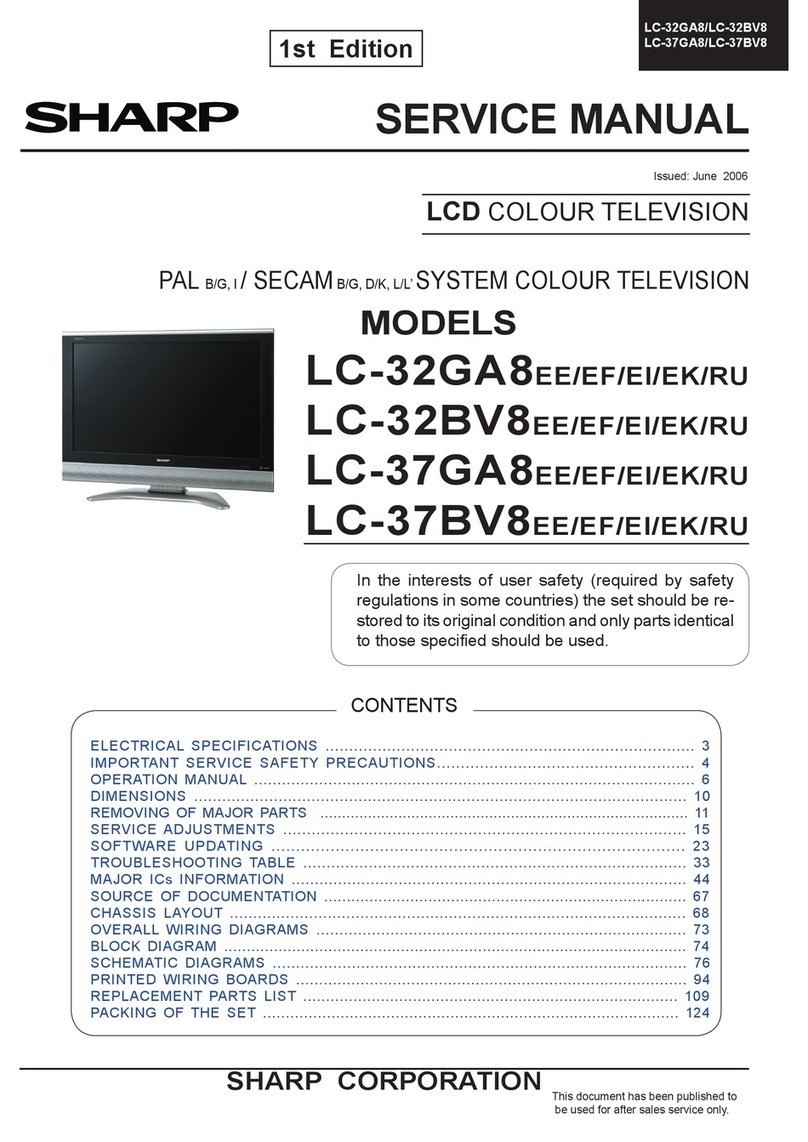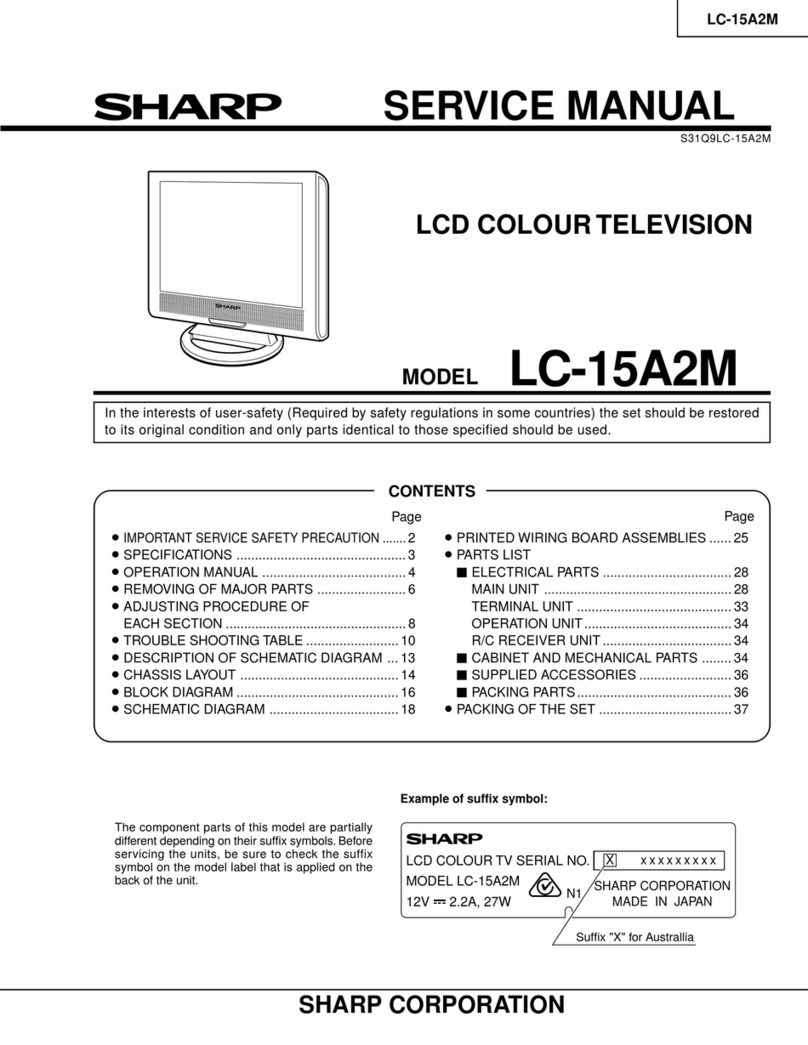
TH-L42E3D
2
7.6. Metal Bracket & Barrier Assembly ------------------- 19
7.7. Gasket Installation --------------------------------------- 20
7.8. Assembly P Board and A Board Assembly-------- 21
7.9. Disassembly P Board and A Board Assembly ---- 22
7.10. Back Cover Installation --------------------------------- 23
8 Measurements and Adjustments -------------------------- 24
8.1. Voltage chart of A-board-------------------------------- 24
8.2. Voltage chart of P-board-------------------------------- 24
9 Block Diagram --------------------------------------------------- 25
9.1. Main Block Diagram ------------------------------------- 25
10 Wiring Connection Diagram --------------------------------- 26
10.1. Wire Dressing --------------------------------------------- 26
11 Schematic Diagram--------------------------------------------- 27
11.1. Schematic Diagram Notes ----------------------------- 27
11.2. A Board ----------------------------------------------------- 28
11.2.1. A Board - Sheet : 002 (1 / 2)---------------------- 28
11.2.2. A Board - Sheet : 002 (2 / 2)---------------------- 29
11.2.3. A Board - Sheet : 003 (1 / 5)---------------------- 30
11.2.4. A Board - Sheet : 003 (2 / 5)---------------------- 31
11.2.5. A Board - Sheet : 003 (3 / 5)---------------------- 32
11.2.6. A Board - Sheet : 003 (4 / 5)---------------------- 33
11.2.7. A Board - Sheet : 003 (5 / 5)---------------------- 34
11.2.8. A Board - Sheet : 004 (1 / 2)---------------------- 35
11.2.9. A Board - Sheet : 004 (2 / 2)---------------------- 36
11.2.10. A Board - Sheet : 005 (1 / 2)---------------------- 37
11.2.11. A Board - Sheet : 005 (2 / 2)---------------------- 38
11.2.12. A Board - Sheet : 008 (1 / 1)---------------------- 39
11.2.13. A Board - Sheet : 009 (1 / 1)---------------------- 40
11.2.14. A Board - Sheet : 010 (1 / 1)---------------------- 41
11.2.15. A Board - Sheet : 101 (1 / 3)---------------------- 42
11.2.16. A Board - Sheet : 101 (2 / 3)---------------------- 43
11.2.17. A Board - Sheet : 101 (3 / 3)---------------------- 44
11.2.18. A Board - Sheet : 300 (1 / 1)---------------------- 45
11.2.19. A Board - Sheet : 301 (1 / 3)---------------------- 46
11.2.20. A Board - Sheet : 301 (2 / 3)---------------------- 47
11.2.21. A Board - Sheet : 301 (3 / 3)---------------------- 48
11.2.22. A Board - Sheet : 302 (1 / 2)---------------------- 49
11.2.23. A Board - Sheet : 302 (2 / 2)---------------------- 50
11.2.24. A Board - Sheet : 701 (1 / 2)---------------------- 51
11.2.25. A Board - Sheet : 701 (2 / 2)---------------------- 52
11.2.26. A Board - Sheet : 702 (1 / 2)---------------------- 53
11.2.27. A Board - Sheet : 702 (2 / 2)---------------------- 54
11.2.28. A Board - Sheet : 703 (1 / 1)---------------------- 55
11.2.29. A Board - Sheet : 704 (1 / 1)---------------------- 56
11.3. KA Board --------------------------------------------------- 57
11.3.1. KA Board (1 / 2)-------------------------------------- 57
11.3.2. KA Board (2 / 2)-------------------------------------- 58
11.4. P Board ----------------------------------------------------- 59
11.4.1. P Board (1 / 3)---------------------------------------- 59
11.4.2. P Board (2 / 3)---------------------------------------- 60
11.4.3. P Board (3 / 3)---------------------------------------- 61
12 Printed Circuit Board ------------------------------------------ 62
12.1. A-BOARD -------------------------------------------------- 62
12.2. KA-BOARD ------------------------------------------------ 64
12.3. P-BOARD -------------------------------------------------- 65
13 Exploded View and Replacement Parts List ----------- 67
13.1. Exploded View and Mechanical Replacement
Parts List --------------------------------------------------- 67
13.2. Electrical Replacement Parts List-------------------- 67
13.2.1. Replacement Parts List Notes ------------------- 67
13.2.2. Electrical Replacement Parts List --------------- 68
